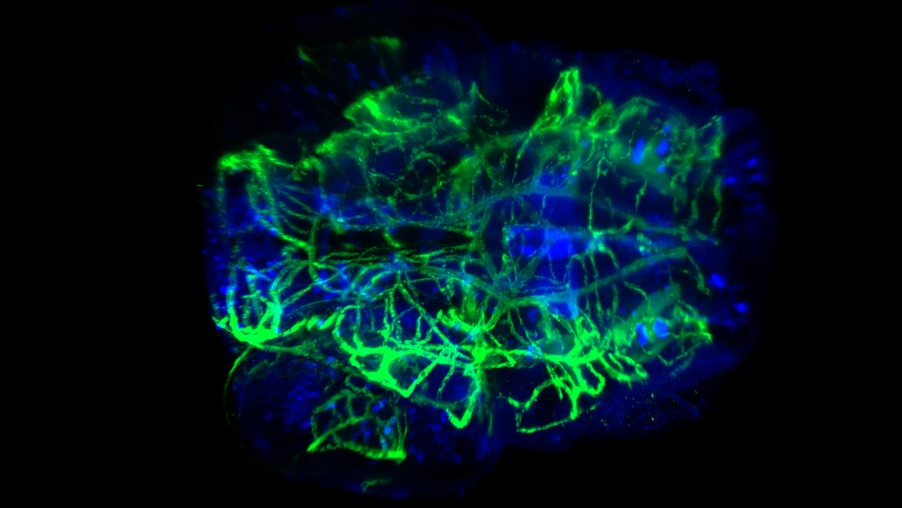Members Login

Channels
Special Offers & Promotions
At the Speed of Life

We live in a three-dimensional ever-changing world. Yet in microscopy, our ability to image in 3D and at the speeds required to observe fast living processes remains a challenge. Compared to other light microscopy techniques, fluorescence microscopy can achieve high specificity and contrast, though there are still major limitations in signal-to-noise ratio and phototoxicity.
Traditional approaches, such as confocal microscopy, eliminate out-of-focus light, a process known as optical sectioning, using a pinhole within the focal plane. Although this method offers an increased signal-to-noise ratio, the sample must still be exposed repeatedly to large amounts of out-of-focus light, increasing the likelihood of photobleaching.
And Then There Was Light—The Advent of Light Sheet Microscopy
In the early 1900s, scientists began looking for a way to improve biological imaging. One such technology arose in 1902 with an optical device called the “Ultramicroscope,” developed by Richard Zsigmondy and Henry Siedentopf (Heddleston & Chew, 2016; Adams et al., 2016). This early light sheet microscope broke away from the traditional optical architecture by separating the illumination and detection light paths, creating the first orthogonal light sheet microscope.
Almost 100 years later, Voie et al. published the first light sheet fluorescence microscope (LSFM) images, using the orthogonal plane architecture to optically section guinea pig cochlea (Heddleston & Chew, 2016; Adams et al., 2016). More recently, variations of LSFMs have been developed to image bacteria, drosophila, zebrafish, and various other tissues.
Bringing Light Sheet Fluorescence Microscopy to the Masses
Modern LSFM systems, also known as selective plane illumination microscopy (SPIM), employ variations of orthogonal architectures like their predecessors, though they use cylindrical lenses to produce a thin sheet of light for optical sectioning. This thin sheet of light excites only a subregion of the sample within the focal plane of the imaging objective. Combined with a high-speed sCMOS camera for emission collection, LSFM provides greater sampling depths, an improved signal-to-noise ratio, and greater imaging speeds for reduced phototoxicity compared to traditional confocal technologies.
Light sheet fluorescence imaging is now recognized as a key microscopy technique for investigating whole organs or live specimens. However, its development among the scientific community is still hampered by the relatively limited scope and capacity to adapt to current model systems. In recent years, “off-the-shelf” LSFM systems have become more readily available to meet the needs of researchers within the biological fields. Not all systems are built alike though, and it is important to consider how different features meet your needs.
4 Important Considerations When Comparing LSFM Systems
There are several important features to think about when deciding which light sheet fluorescence system is best for you.
1 First and foremost, sample preparation:
Unlike in traditional microscopy where large fixed samples are typically sectioned and mounted onto slides, light sheet microscopy samples are imaged intact and, therefore, must be optically cleared, which entails making them transparent. There are many protocols for clearing various tissues, and many clearing solutions are also available commercially. I recommend reading “A beginner’s guide to tissue clearing” by Pablo Ariel (Int J Biochem Cell Biol. 2017 Mar. 84: 35–39) for a review of a few popular methods.
2 Optical architecture:
The optical architecture for the illumination and detection path can strongly impact the nature and size of the samples that can be observed, as well as the quality of your image. Striping artifacts, for example, are caused by the emitted light refracting off an opaque structure within the sample. To overcome this issue, a plethora of optical architectures have been designed for image acquisition on live or cleared samples of all sizes. One example of these architectures is multidirectional SPIM (mSPIM), in which multiple illumination paths are aligned to illuminate the sample and overcome striping artifacts. While mSPIM systems may offer optimal performance for specific applications, they all share limitations in terms of flexibility, modularity, and practical use, which should be taken into account when selecting a system best suited for your research.
3 Sample flexibility:
While LSFM is a quickly expanding field with new systems coming to market each year, because of their different designs there is a high level of variation in terms of the types of samples they can accommodate. Some systems can only image smaller samples such as spheroids, whereas others can only image larger tissues. They may also be limited to imaging either fixed or live specimens. Although this type of specificity might be ideal for a single user who focuses on one sample type, the ability to share the equipment with an entire research department or to expand your research is compromised. It is important to consider all the potential sample types that your LSFM system will need to be able to handle. Recently, more flexible LSFM systems have been designed to bridge this gap in sample variation. The Alpha3 light sheet fluorescence microscope, for instance, can accommodate a wide variety of specimens, from single cells through to whole mouse brains, including live organisms.*
4 Data management:
Lastly, and potentially most importantly, is data management. It is not unheard of for a single experiment to reach 100s of gigabytes (GBs), even terabytes (TBs) of data. Working with your local IT group to create a plan for your data needs is strongly recommended. Be aware you may need to purchase a separate analysis software package to render and analyze such large data sets.
Olympus Company Profile | Recent News
Media Partners



